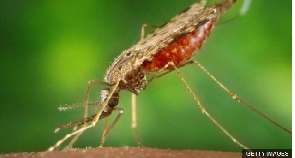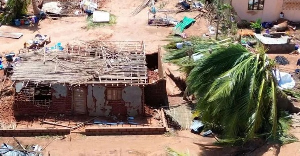Malaria prevalence among children has declined over time, but areas for improvement remain in malaria prevention, according to the newly released 2019 Ghana Malaria Indicator Survey (GMIS).
The 2019 GMIS is the second MIS survey implemented in Ghana. The previous GMIS was implemented in 2016. The survey results, released Tuesday in a virtual dissemination webinar organised by the Ghana Statistical Service and the National Malaria Control Programme, highlight a continued reduction in malaria prevalence among children age 6-59 months.
RelatedPosts 7 pregnant women tested positive for Covid-19 African Leaders and Advocates, when you think COVID-19, think Malaria! “The results of the 2019 Ghana MIS will be used by the Government of Ghana and the Ministry of Health to inform priorities and strategies for malaria prevention and its eventual elimination,” says Mr Peter Takyi Peprah, a Presenter from GSS.
The 2019 GMIS was conducted between September and November 2019 at the peak of malaria season. All children age 6-59 months living in selected households were eligible for anaemia and malaria testing.
Malaria prevalence according to microscopy among children age 6-59 months has declined from 27% in 2014 to 14% in 2019. Malaria prevalence is more than three times higher among rural children (20%) than urban children (6%). By region, malaria prevalence ranges from a low of 2% in Greater Accra region to a high of 27% in Western region. Overall, 4% of children in Ghana have low haemoglobin. The prevalence of low haemoglobin has decreased by half since 2014, from 8% to the current level.
Prior gains in household ownership and use of insecticide-treated nets (ITNs) have sustained since the 2016 GMIS. Three in four Ghanaian households own at least one ITN, and half of households have at least one ITN for every two people who stayed in the household the night before the survey. Over half (54%) of children under 5 and 49% of pregnant women age 15-49 slept under an ITN the night before the survey. ITN use among children under 5 and pregnant women has stagnated since 2016.
Among women age 15-49 who have heard of malaria, 59% have seen or heard a malaria message in the six months before the survey. Women were asked if they had heard about the malaria vaccine and if they would allow their child to be vaccinated against malaria. One in three women have heard about the malaria vaccine, and 9 in 10 women would allow their child to be vaccinated against malaria.
The 2019 GMIS provides up-to-date estimates of basic demographic and health indicators for malaria at the national level, for urban and rural areas, and for each of the 10 former administrative regions.
In 2019, Ghana created 6 new regions; however, the new administrative boundaries were not available during survey design of the 2019 GMIS. A total of 5,181 women age 15-49 were interviewed, representing a response rate of 99%.
The 2019 GMIS was implemented by the Ghana Statistical Service (GSS) in close collaboration with the Ghana National Malaria Control Programme (NMCP) and the National Public Health Reference laboratory (NPHRL) of the Ghana Health Service (GHS).
Financial support for the survey was provided by the United States Agency for International Development (USAID) through the President’s Malaria Initiative (PMI), the Global Fund to Fight AIDS, Tuberculosis, and Malaria, and the Government of Ghana.
ICF provided technical assistance through The DHS Program, a USAID-funded project offering support and technical assistance in the implementation of population and health surveys in countries worldwide.
Click to view details



General News of Wednesday, 29 July 2020
Source: 3news.com

















